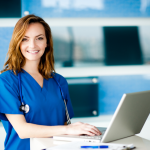Blog
What is First Aid And Why Is First Aid Important ?

First aid is the first, immediate help or treatment given to the person suffering from either a minor or serious illness or injury, before any professional medical help.
First Aid is generally implemented by a person with essential clinical training.
There are many situations which may require first aid, This can include specific training or equipment to be available in the workplace, the provision of specialist first aid cover at public gatherings, or mandatory first aid training within schools.
First aid, generally done by untrained people, present at the time of incidence, involves the best help given to preserving the life of an ill person so it can't be compared with professional treatment.
TRAINING PRINCIPLES
First aid scenario training in progress
Essential standards such as, knowing the utilization of adhesive bandage or applying direct pressure on a drain, are frequently procured through life encounters.
You can consult your physician to provide basic emergency instructions for life-saving first aid interventions on phone, till any professional help or ambulance arrives.
SETTING THE PRIORITIES
Basic points of these protocols include: ABC
- Airway (clearing airways)
- Breathing (ensuring respiration)
- Circulation (internal bleeding)
AIMS
The goal of first aid is to prevent further worsening of the injury.
The key aims of first aid can be summarized with the acronym of 'the three Ps'
• Preserve life: The abrogating point of all clinical consideration which incorporates emergency treatment is to spare lives and limit the danger of death.
• Prevent further harm:: Check and exclude the cause or external factor that may more worsen the condition of the patient.
• Promote recovery:: Applying first aid to the patient, promotes the recovery process from the illness. some first aid treatment is complete treatments, like for small cut, bruises, etc
PHYSICAL CONDITIONS
There are some physical situations which requires First Aid. Some of these situations are :
• Altitude sickness can cause potentially fatal swelling of the brain or lungs.
• Anaphylactic shock
• Battlefield first aid
• Bone fracture
• Burns
• Cardiac Arrest
• Choking, blockage of the airway
• Childbirth.
• Cramps in muscles
• Drowning or asphyxiation.
• Gender-specific conditions, such as dysmenorrhea and testicular torsion.
• Heart attack
• Heatstroke
• Hair tourniquet
• Heat syncope
• Heavy bleeding
• Hyperglycemia & Hypoglycemia
• Hypothermia
• Insect and animal bites and stings.
• Joint dislocation
• Poisoning
• Seizures
• Muscle strains and Sprains
• Stroke
• Shock and Electric shock
• Toothache
• Wounds and bleeding
• Gastrointestinal bleeding
• Avulsions
• Sucking chest wounds
Accidents may happen anywhere like school, office, public gathering, home.
These require immediate help before the patient is attended by the emergency physicians or hospital.
FIRST AID KIT
There is no universal agreement upon the list for the contents of a first aid kit.
As an example of possible contents, the First Aid Kit lists the following items:-
Information leaflet
Medium sterile dressings
Large sterile dressings
Bandages
Triangular dressings
Safety pins
Adhesive dressings
Sterile wet wipes
Microporous tape
Nitrile gloves
Face shield
Foil blanket
Burn dressings
Clothing shears
Conforming bandages
Finger dressing
Antiseptic cream
Scissors
Tweezers

